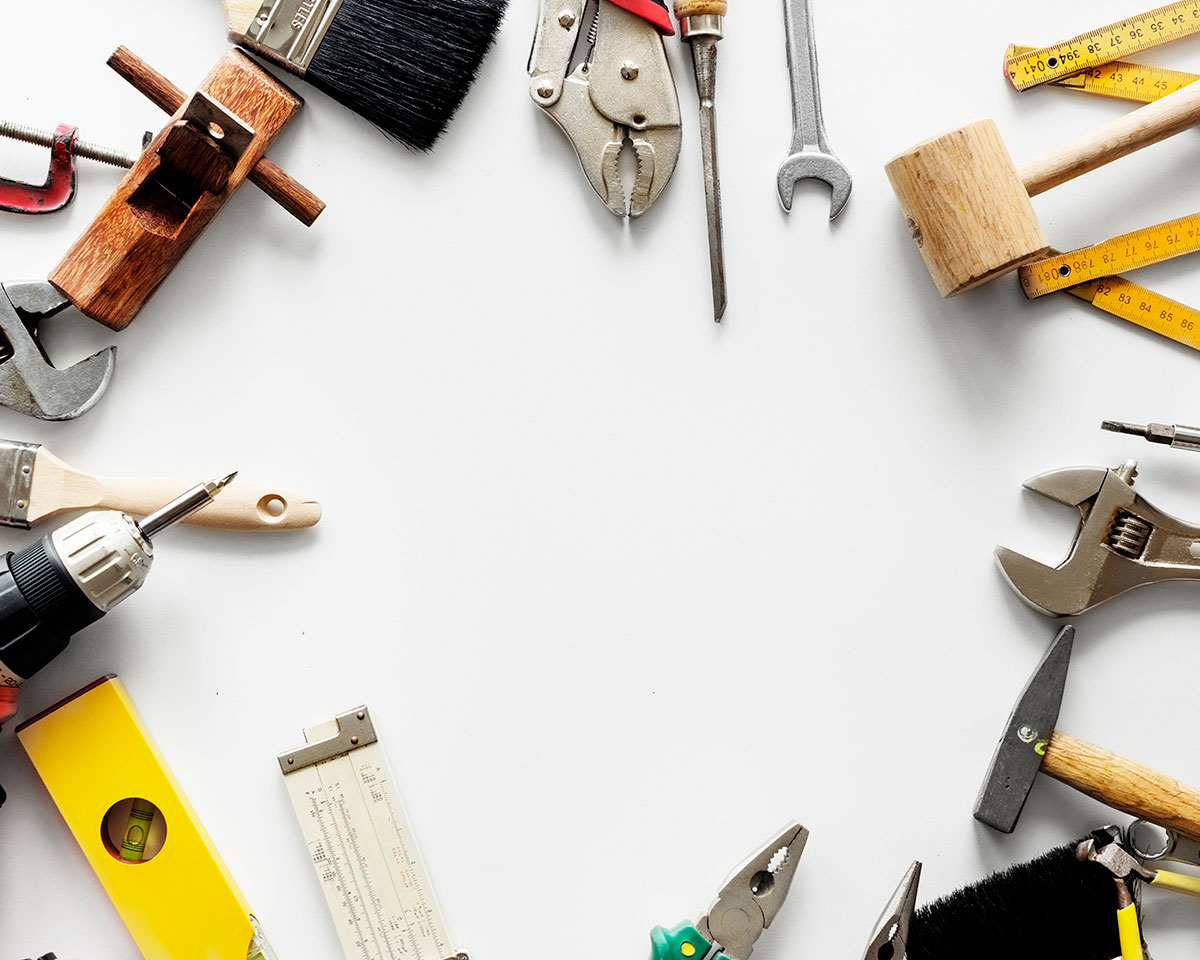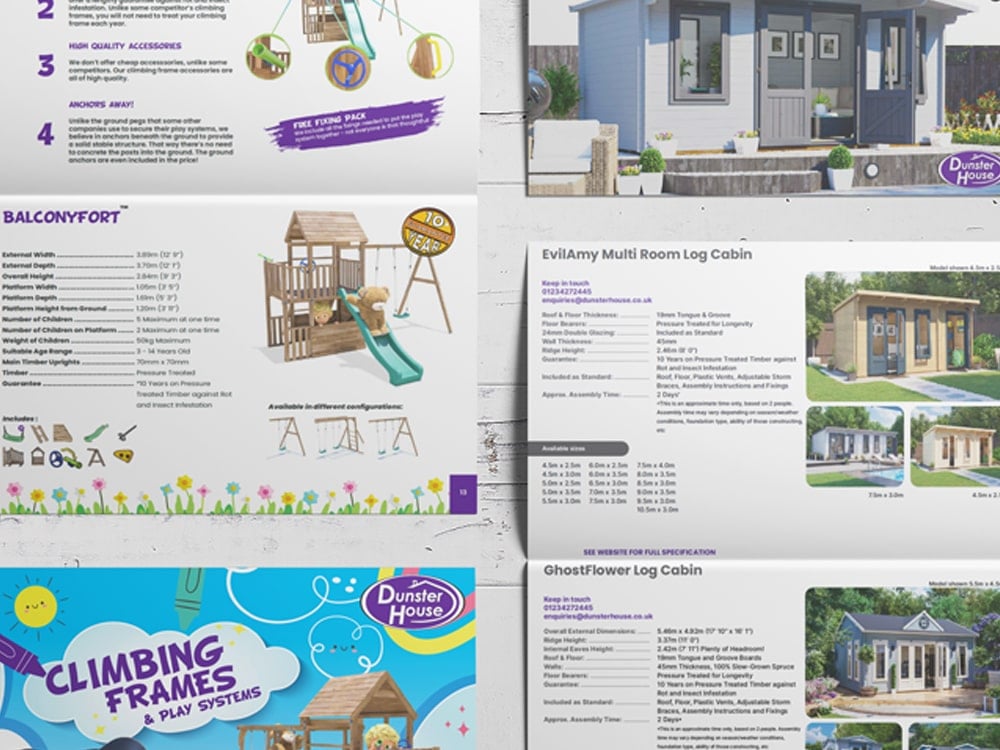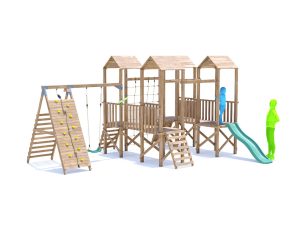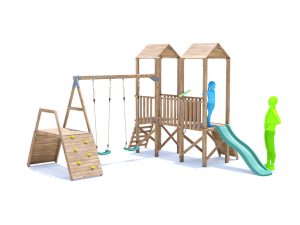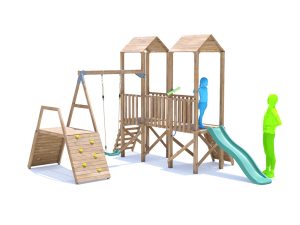The Dunster House technical team takes measures to ensure that all our climbing frames are manufactured and safety tested to meet rigorous European standards. However, regular maintenance that prolongs its life and ensures the safety of children remains vital. So how do you adequately prepare to maintain your climbing frame?
Key areas to focus on when performing maintenance
Here at Dunster House, we recommend that you perform climbing frame maintenance and check for wear and tear at least once a year. We recommend more if the play system has been subjected to frequent use. Here is a list of the key areas to focus on:
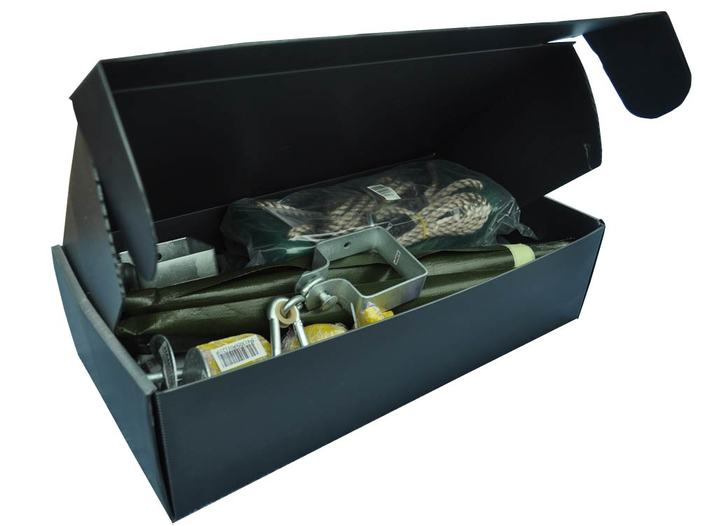
- Make sure that you have the correct tools to undertake key maintenance
- Check to see if the ground that the climbing frame rests upon is level
- Ensure that any ground anchors are securely fastened
- Inspect the state of the timber
- Examine the fixtures and supporting joints
Checklist: Tools needed to perform Climbing Frame maintenance
• Screwdriver – To be as safe and secure as possible, Dunster House climbing frames are held together using many screws. Therefore you will need a high-quality screwdriver.
• Socket Set – Major supporting joints on Dunster House climbing frames are bolted together for extra structural reinforcement, as well as screwed. Therefore if you need to retighten any of the bolts, you will need access to a 10mm socket. This will change to a 8mm socket for climbing frames that feature Monkey Bars.
• Adjustable Spanner – Our frames use clamp style hooks to fasten the swing to the supporting bar. This is instead of bolt through hooks which may weaken the structure. If these have come loose and need retightening, you’ll need an adjustable spanner.
• Level – In order for your climbing frame to maintain structural integrity, it is vitally important that it is built upon even ground. To ensure that the surface is flat, use a spirit level.
• Spade – Dunster House climbing frames use large ground anchors (where applicable). If these become loose or unearthed you may need to dig suitable holes for them.
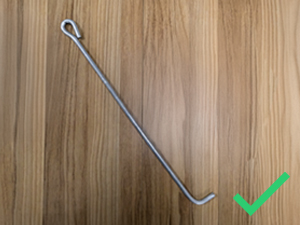
How to ensure that your ground Anchors are securely fastened?
The ground anchors that your climbing frame came supplied with are crucial to providing the base for a solid and stable structure. If they have become loose or have been ripped out of the ground entirely, the climbing frame becomes less safe.
If instability become an issue, it may be that the soil where your climbing frame sits is not compact enough. As a consequence, you will need to consider moving the frame to an area that has a higher soil density. Higher soil density is capable of providing a solid area to keep the ground anchors in place. If this is not possible then you will need to consider the option of concreting the anchors into place.
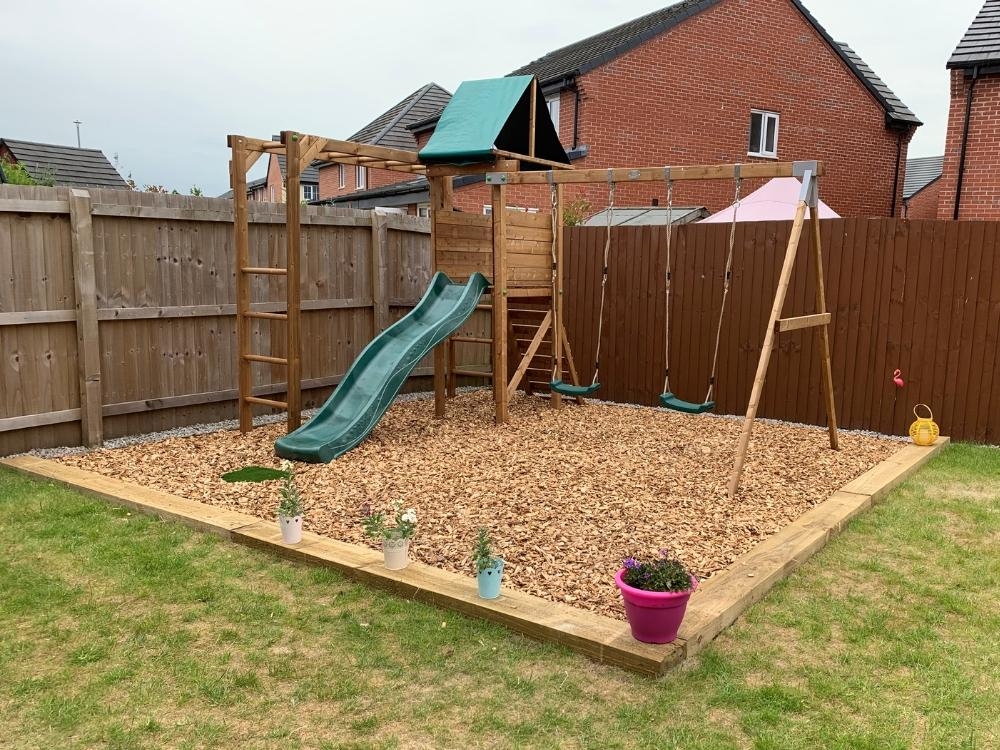
How to preserve your timber?
The majority of our climbing frames are made with pressure treated timber, using a non-toxic solution. This provides a safe, long-lasting product and is a major contributing factor in allowing our climbing frames to carry a 10-year warranty against rot and infestation.
However, for those climbing frames that are not pressure treated – and even for those that are– it is important to take measures to preserve timber that is exposed to the elements year in, year out.
Cleaning the timber on your Climbing Frame
Depending on the position of the climbing frame within your garden, it may become dirty and will, therefore, need cleaning. If, for instance, it is situated under trees depositing sticky sap and shedding leaves, the climbing frame could be rendered unsafe to use, especially if it is still being played on during the autumn and winter months. If this is the case, it is best to use a mild detergent and warm (not hot) water to clean the frame, as this will cause the least amount of stress to the timber.
Dealing with cracked wood
Timber, as a natural material, will expand, contract, crack and warp in accordance with different climatic conditions. Wood will absorb and lose moisture depending on the temperature and level of humidity in the air, which in turn can cause cracks to appear on the wood’s surface. Summer, therefore, is the time of year when cracks and warps will naturally occur. During dry spells, surface shakes will appear but these do not affect the safety of your climbing frame.
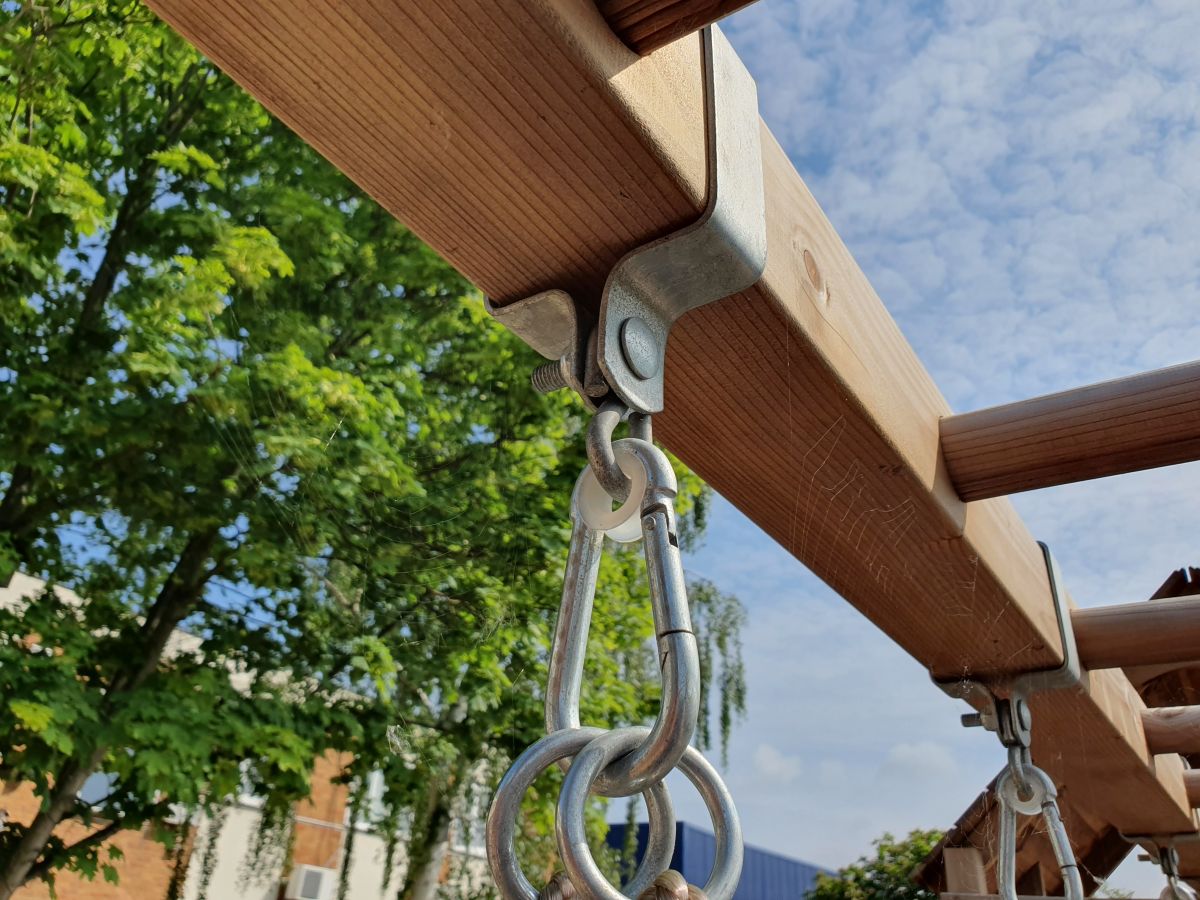
What to do once you have examined the fixtures and supporting joints
During the summer months – which typically take the brunt of climbing frame usage – fittings such as nuts, bolts, and screws can become loose. Therefore, it is vitally important to regularly check these fittings to make sure that they are suitably fastened. Depending on the fitting, you will need to use your screwdriver, socket set or adjustable spanner for refastening, so make sure you have each tool to hand. Be careful to tighten each fixture gently, as over-tightening can cause the wood to needlessly crack.
Additional Maintenance Advice
If you are certain that the climbing frame is going to go through a period of inactivity, then it can be worth investing in a cover to provide extra protection during the winter months. The two best options are provided by plastic or canvas, and both can be bought in large enough sizes to provide the desired coverage.
Of course at Dunster House, we’re committed to making sure you get the best. So, if you have any questions, we’re more than happy to help! Contact us if you need any help or further information, or view our website to find out all you need to know about Dunster House climbing frames.


